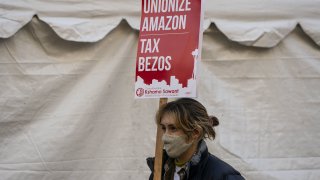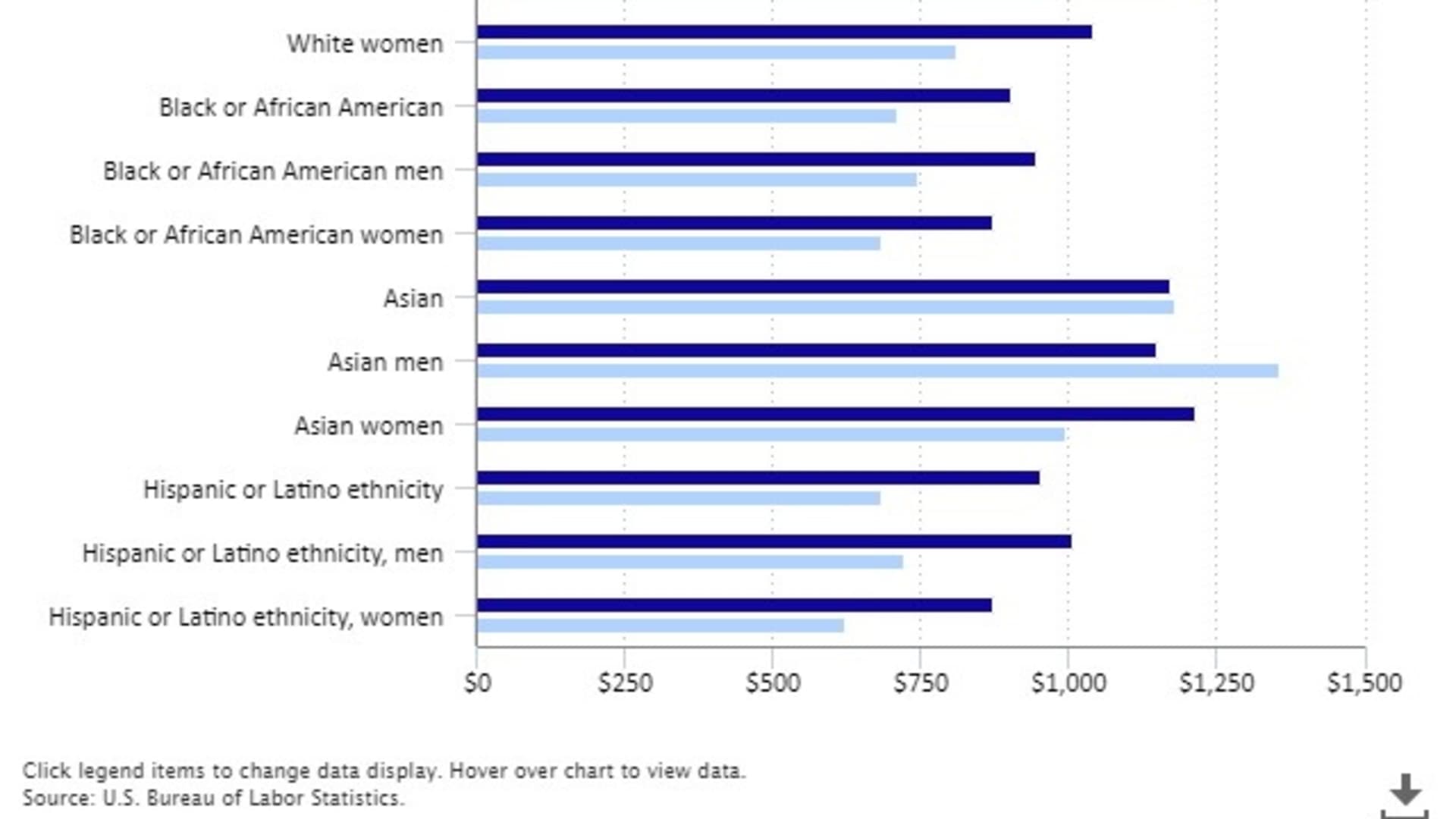
As wealth inequality accelerates, essential workers organize for pandemic protections and President-elect Biden makes promises to be "the most pro-union president you've ever seen," interest in labor unions appears to be on the rise.
In January, hundreds of Google employees voted to unionize, and this month, thousands of Amazon workers in Alabama are expected to do the same.
These movements buck a decades-long trend of union enrollment decline. Bureau of Labor Statistics data indicates that in 1983, 20.1% of employed Americans were members of a union. By 2019, that share had decreased by roughly half to 10.3%. But in 2020, that share ticked up slightly to 10.8%.
Even as the share of employed Americans who were represented by a union declined, union wages remained solid. The BLS reports that on average, in 2019, union workers earned roughly $1,095 per week, while nonunion workers earned closer to $892. Put another way, nonunion workers made just 81 cents for every dollar union workers made.

CNBC Make It spoke with experts about why union enrollment declined for decades — even if wages were higher.
Alexander Colvin, dean of the ILR School at Cornell University, points to corporate interests as one reason union enrollment has declined.
"Higher union wages, better union benefits, and union work rules that limit management discretion are things employers dislike and they seek to avoid union representation," he explains. "That includes steps like shifting investment to nonunion facilities and to parts of the country with low levels of unionization."
Money Report
Neoliberal trade and tax policies that encourage employers to move jobs to places where they can pay workers the least are also to blame, says Richard Trumka, president of the AFL-CIO.
In addition, the occupations and industries where union participation has historically been highest have shrunk.
"Union density has historically been concentrated in manufacturing and the public sector. Those sectors have declined," says Kate Bronfenbrenner, the director of labor education research and a senior lecturer at the ILR School at Cornell University. "And also [job] growth has been in the sectors where unions have traditionally not existed. Growth has been in the high tech sector, in the service sector and in jobs that are not covered by the National Labor Relations Act; like independent contractors and leased workers and domestic workers."
But new interest in labor unions among workers in growing industries such as tech and media may be revitalizing growth, and people like Congressman Mark Pocan of Wisconsin, a long-time union member and co-founder of the House's Labor Caucus remain optimistic that union enrollment will rise in 2021 and beyond.
"Public opinion for people having a voice in their workplace through labor unions is at almost an all-time high," he says. "It's really up there because people have seen those attacks have really made it harder for people to get a fair share and a fair shake in their workplace."
Don't miss:






